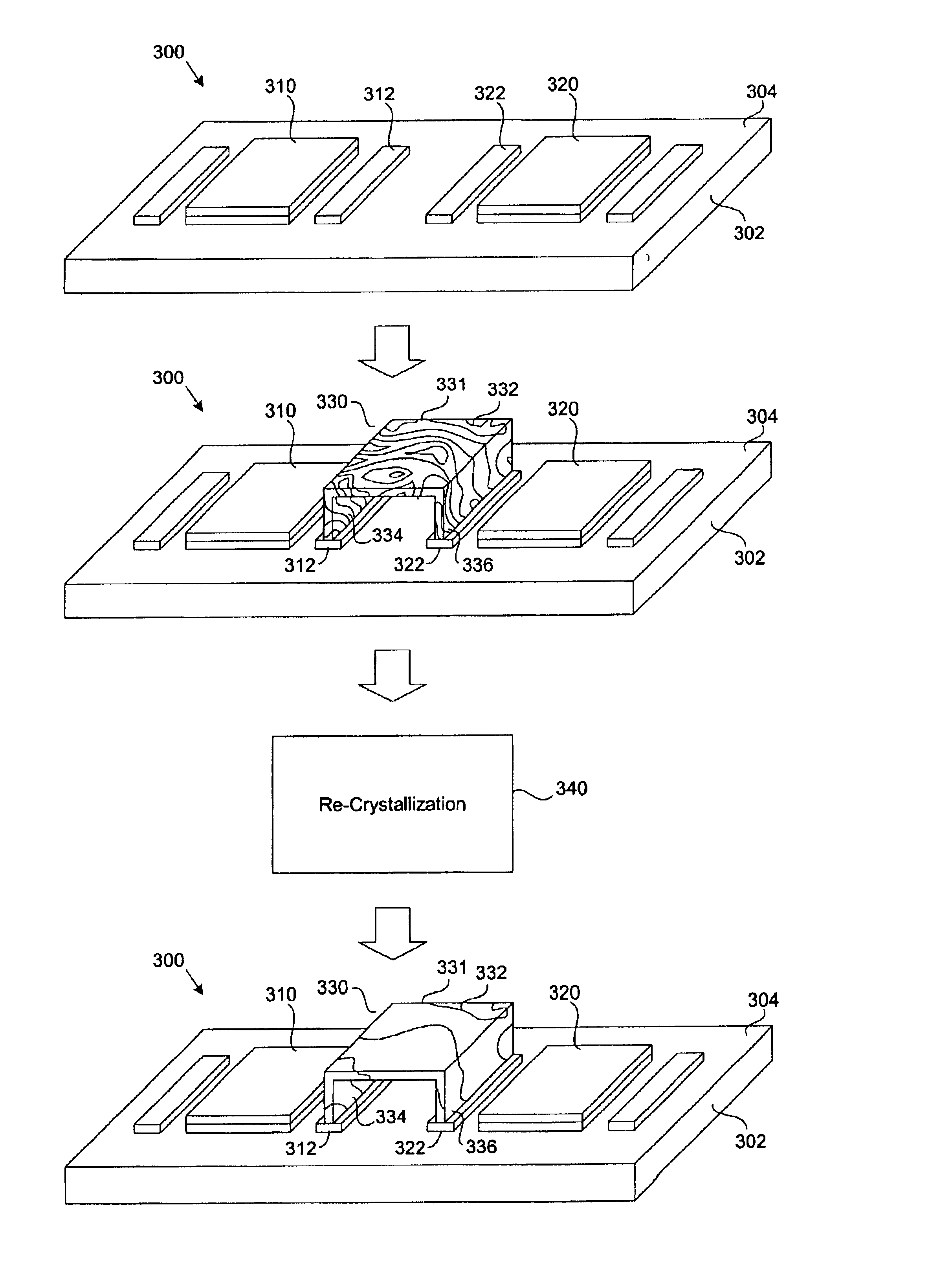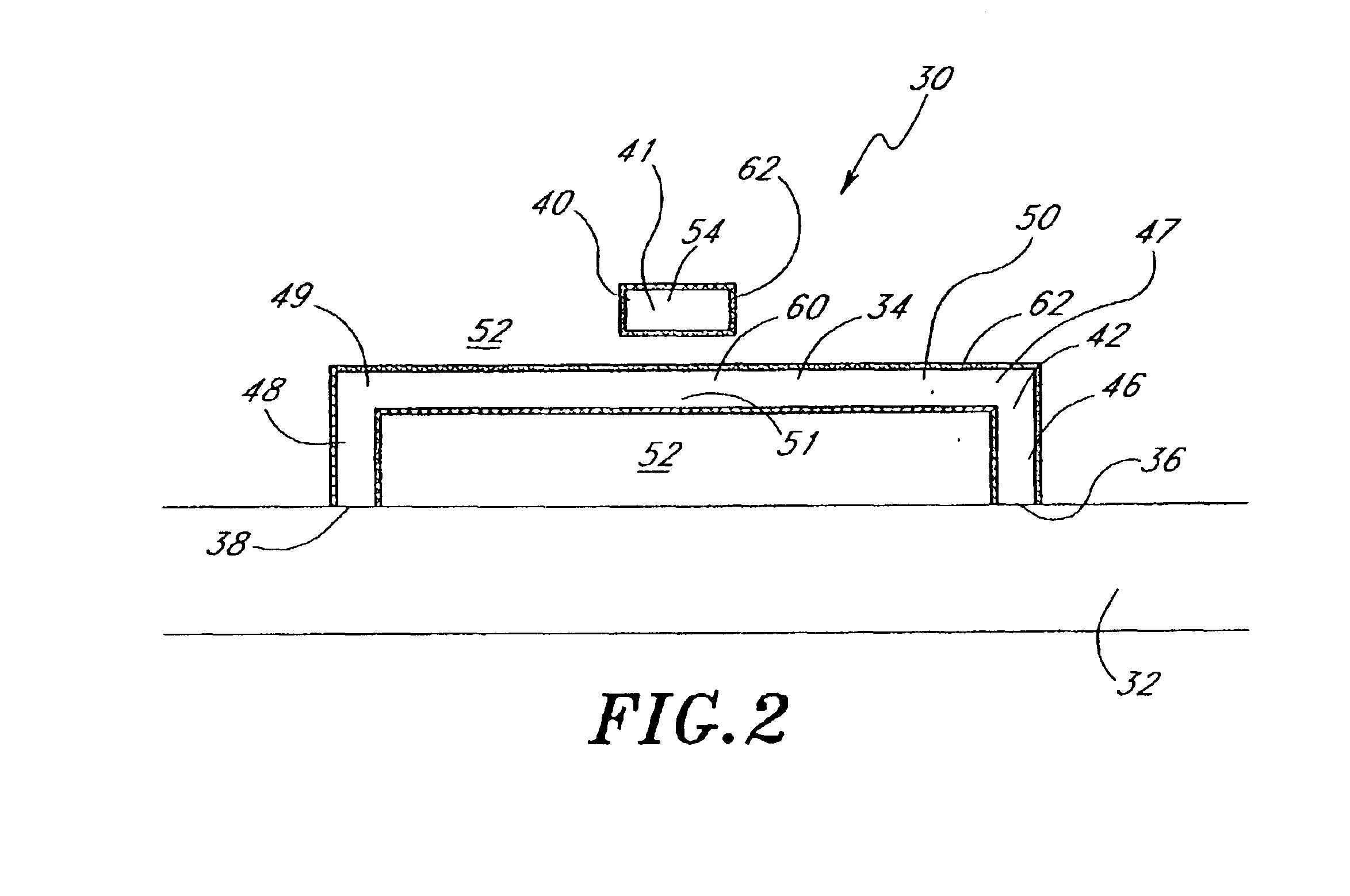Coating of copper and silver air bridge structures to improve electromigration resistance and other applications
a technology of air bridge and copper, applied in the field of integrated circuits, can solve the problems of increasing the number of electrical interconnects of high-density devices, increasing signal propagation delays and signal cross-talk, and increasing the number of circuit elements of high-density devices, so as to reduce the electromigration rate of copper, reduce the effect of surface diffusion, and reduce the effect of solubility
- Summary
- Abstract
- Description
- Claims
- Application Information
AI Technical Summary
Benefits of technology
Problems solved by technology
Method used
Image
Examples
Embodiment Construction
[0039]The illustrated embodiments of the present invention comprise a miniaturized electrical interconnect having improved operating characteristics and methods for providing the same. The electrical interconnect includes a bridge section surrounded by air, referred to hereinbelow as an “air bridge”, so as to reduce the capacitance of the interconnect. Air bridges are also described in U.S. Pat. No. 5,891,797 which is incorporated herein by reference in its entirety. As will be described in greater detail below, air bridges formed in accordance with the various aspects of the present invention are provided with reduced resistance and a reduced tendency to sag, thereby enabling them to have a reduced cross-sectional area and to extend across larger distances.
[0040]Improved electrical interconnects formed according to the methods of the illustrated embodiments are particularly useful in the manufacture of ultra-high density integrated circuit devices, such as a Dynamic Random Access M...
PUM
 Login to View More
Login to View More Abstract
Description
Claims
Application Information
 Login to View More
Login to View More - R&D
- Intellectual Property
- Life Sciences
- Materials
- Tech Scout
- Unparalleled Data Quality
- Higher Quality Content
- 60% Fewer Hallucinations
Browse by: Latest US Patents, China's latest patents, Technical Efficacy Thesaurus, Application Domain, Technology Topic, Popular Technical Reports.
© 2025 PatSnap. All rights reserved.Legal|Privacy policy|Modern Slavery Act Transparency Statement|Sitemap|About US| Contact US: help@patsnap.com



